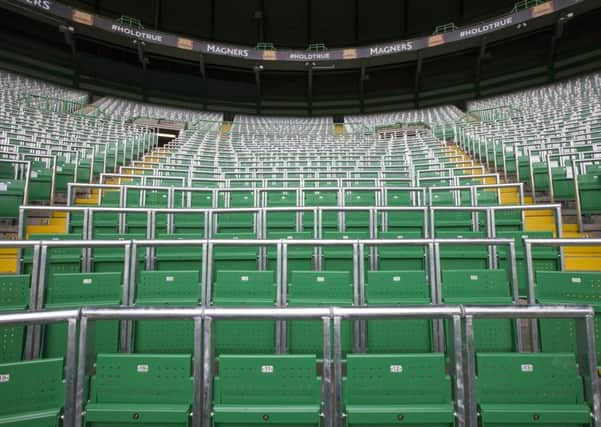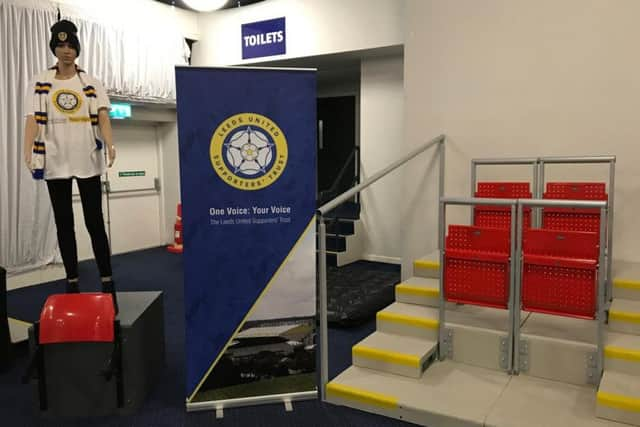Standing up for a club's right to choose


The governing body has compiled a series of recommendations aimed at changing the existing law ahead of a government debate on the issue which takes place in Westminster Hall on Monday.
Parliament will discuss potential changes to the statute after an online petition calling for the return of standing in top-level stadiums attracted more than 100,000 signatures.
Advertisement
Hide AdAdvertisement
Hide AdThe petition drew support following sports minister Tracey Crouch’s decision to reject an application by West Bromwich Albion to re-introduce standing at The Hawthorns in April. Standing areas have been prohibited in Premier League and Championship venues since the mid-1990s, owing to a new law passed in the wake of the Hillsborough disaster in 1989.


A campaign to bring back standing sections has been gaining momentum, and public pressure led the government to announce a review of the current policy earlier this month. Crouch is due to address next week’s Westminster debate.
A recent survey carried out by the EFL, which received over 33,000 responses, found that 94 per cent of those who took part were in favour of having the choice between sitting and standing at matches.
Twenty two of the EFL’s 72 clubs already have standing areas at their stadiums, including Burton Albion who have were relegated from the Championship last month after two seasons.
Advertisement
Hide AdAdvertisement
Hide AdThe EFL’s plan would involve limiting individual standing areas to a maximum capacity of 7,500 and placing responsibility for a decision over whether to permit standing on local authorities and safety advisory groups.
Shaun Harvey, the EFL’s chief executive, said: “To try and shoe-horn everyone into a one-size-fits-all debate will never lead to the best decisions being made up and down the country. Local safety advisory groups and the clubs know their stadiums far better than anyone else and will be able to make informed, correct decisions.
“This also has the advantage of not making it one person’s decision. You have the burden of that decision being shared.”
In 2014 over 50 clubs voted for the EFL to begin pushing for a change which offered the choice between seated and standing areas but the process was delayed while the Hillsborough inquiry continued. Harvey said the government’s decision to oppose West Brom’s application had convinced the EFL to “put our foot on the accelerator”.
Advertisement
Hide AdAdvertisement
Hide AdMost Championship clubs have made no public comment on their stance but Leeds United allowed the Leeds United Supporters Trust to stage a safe-standing roadshow at Elland Road last month. The event allowed those attending to use rail seating similar to that installed by Celtic in 2016.
The introduction of standing areas would have cost implications and UEFA regulations require clubs who play in Europe to have all-seater grounds. The Premier League said in April that it wanted “far more evidence” before deciding whether to add its support to the campaign. Harvey said the debate about standing should not be based on the issue of safety, citing the use of standing amongst existing lower league clubs.
“Twenty-two of our clubs already have standing which is deemed as being safe,” he said. “We’re not going to promote something that’s not already approved.
“We’re not campaigning for any one form of seating, whether that be rail seating, a return to terracing, managed standing in seats areas or any other form. We’re trying to create a framework which allows the club the choice.”
Advertisement
Hide AdAdvertisement
Hide AdHarvey also said that a maximum standing capacity of 7,500 would be recommended for single stands, saying the governing body was anxious to avoid a return to the “mass banks of terraces” seen prior to the Hillsborough disaster and the subsequent Taylor Report.
“We’ve looked at existing terraces that operate safely and experience of clubs with terraces of more than 7,500 is that the potential number of issues increases,” Harvey said.
“We’ve already written to the DCMS (the Department of Culture, Media and Sport) for details of what evidence they’re likely to need. Ultimately from there we’ll put a campaign together to try and get the change in legislation, which we would hope should be capable of being achieved inside a 12-month period.”